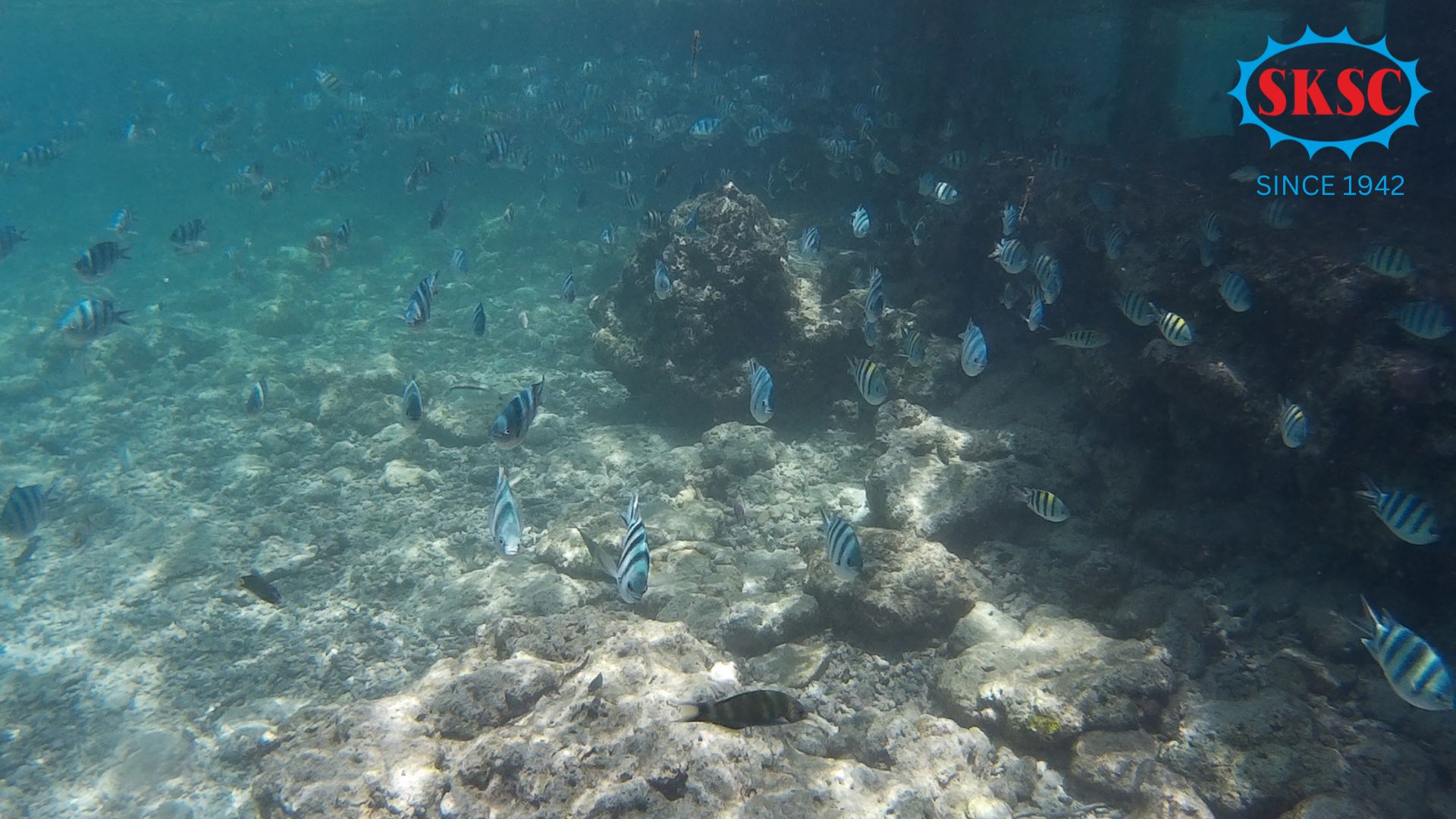
A threat in marine life
Microplastics are minuscule plastic fragments measuring between 0.1 to 5mm in size. They can originate as primary plastic particles specifically designed for use, or as secondary fragments that break off from larger plastic objects. It is estimated that there are over 15 trillion pieces of microplastic debris scattered across the world's oceans, with 80 percent of this debris coming from activities on land. The type of plastic and its interaction with the environment can have significant effects on ecosystems and the health of animals. To gain insight into the composition of our marine environment, including the sea surface and sand on beaches, scientists conducted experiments at various coastal areas across the country to explore how these materials interact with the marine ecosystem.
In 2020, five different types of plastic were placed in coastal waters across various regions of the South Pacific Ocean. These plastics were secured to large steel frames, and the researchers left them in the ocean for a year to observe which organisms began to inhabit their surfaces and what chemicals were released or associated with them.
Once in the marine environment, plastics quickly attract microbial communities, which are then followed by a diverse array of invertebrates and seaweed, eventually leading to the establishment of a climax community. These communities may also host invasive species or harmful pathogens, posing a threat to native species due to their negative impacts.
The researchers tracked these communities over time using advanced DNA sequencing techniques and examined how they influenced the plastics. For instance, they investigated whether the organisms growing on the plastics played a role in their degradation and the formation of microplastics.
The five types of plastic used in the study were a blend of new and artificially aged plastics, including two types commonly found in plastic bags (polyethylene and oxo-polyethylene, which is now prohibited in many East Asian countries), one typically found in beverage bottles, one increasingly used in food and liquid containers as a "green" alternative to traditional plastics due to its biodegradability, and one used in materials like fishing lines. Although polylactic acid is considered industrially compostable, the conditions necessary for its composting are not present in the ocean.
By analyzing the changes in the plastics over time and the chemicals and organisms they attract, the researchers aim to better understand the potential risks these plastics may pose to the environment. Additionally, by studying the effects of artificially aged plastics, they can evaluate how these risks and impacts on the environment may evolve as the plastics weather. This research is crucial as it reveals that there are plastics in the oceans that range from just a few days old to several decades old. Focusing solely on the effects of new plastics does not provide a complete understanding of the issue. With a significant amount of plastic waste entering the environment from urban areas and flowing into the oceans through freshwater channels (rivers, creeks, and stormwater), it is essential to comprehend the transition from human use to pollution and its effects on the fate and impact of plastics on the environment. Similar to the study of oceanic ecosystems, experts in environmental research and their partners embarked on initiatives to explore the various phases of freshwater plastic pollution. They investigated the role of microplastics as a primary source of chemical contamination, their ability to absorb pollutants and render them accessible to living organisms, and the role of microorganisms in these processes. Sewage treatment facilities are a significant contributor to the release of plastics into the environment, due to the disposal of items or their entry into these systems. A study conducted at the Christchurch sewage treatment facility by students on the technical program offered a chance to delve into this issue. Their investigation revealed connections between different types of plastics, the chemicals, and microorganisms present in the sewage, enhancing our understanding of the potential environmental risks associated with microplastics from sewage.
S.K.S.C.NADARAJAN & BROR.
Tuticorin Salt | crystal salt | crushed salt | relish freeflow salt | fine salt | coarse salt | size salt | Salt supplier | Kerala salt supplier | South indian salt export | South India salt company | thoothukudi saltern | Tuticorin saltern | deicing salt exporter | deicing salt tuticorin | Thoothukudi salt exporter | Thoothukudi traditional salt | Sea salt tuticorin | Sea salt Thoothukudi | Thoothukudi salt | India salt exporter tuticorin | salt Thoothukudi India | SKSC salt Tamil nadu | India old salt company | Salt company India | Salt company tamil nadu | Salt company Tuticorin | Tamil nadu Salt | India Salt | powder salt | natural salt india | Best salt company in south india | Salt seller Tuticorin | Salt seller in tamil nadu thoothukudi | retail table salt | common salt manufacturer | desalination salt | Salt for soap industry | Salt for dye industry | Salt for water softening | Salt for spice and masala industry | Iodised Salt | Iodized common Salt | Crystal edible salt |
